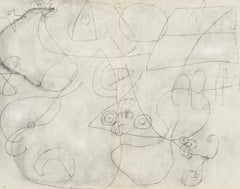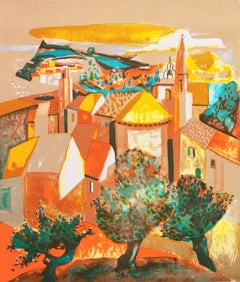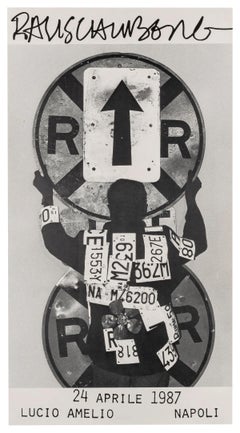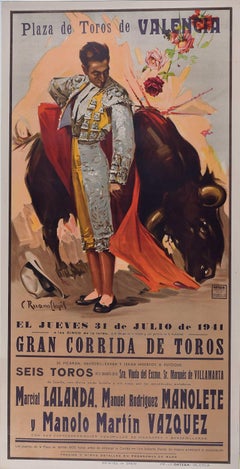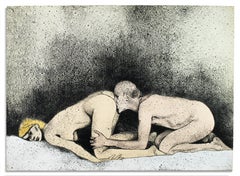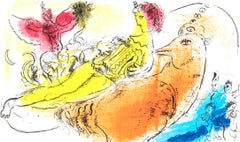Lithograph Prints and Multiples
1960s Surrealist Lithograph Prints and Multiples
Lithograph
1970s Lithograph Prints and Multiples
Paper, Lithograph
1980s Pop Art Lithograph Prints and Multiples
Lithograph, Offset
1940s Other Art Style Lithograph Prints and Multiples
Lithograph
1970s Realist Lithograph Prints and Multiples
Lithograph
1950s Expressionist Lithograph Prints and Multiples
Lithograph
Early 20th Century Art Nouveau Lithograph Prints and Multiples
Lithograph
1980s Pop Art Lithograph Prints and Multiples
Lithograph, Offset
1960s Modern Lithograph Prints and Multiples
Lithograph
Late 20th Century Lithograph Prints and Multiples
Lithograph
1960s Contemporary Lithograph Prints and Multiples
Lithograph
1970s Surrealist Lithograph Prints and Multiples
Lithograph
Late 20th Century Post-Impressionist Lithograph Prints and Multiples
Lithograph
1950s Lithograph Prints and Multiples
Lithograph, Paper
1970s Abstract Lithograph Prints and Multiples
Lithograph
1960s Modern Lithograph Prints and Multiples
Lithograph
1980s Cubist Lithograph Prints and Multiples
Lithograph
1950s Surrealist Lithograph Prints and Multiples
Lithograph
1970s Surrealist Lithograph Prints and Multiples
Lithograph
1980s Lithograph Prints and Multiples
Lithograph
20th Century Modern Lithograph Prints and Multiples
Lithograph
1970s Modern Lithograph Prints and Multiples
Lithograph
1860s Modern Lithograph Prints and Multiples
Lithograph
2010s Minimalist Lithograph Prints and Multiples
Watercolor, Lithograph, Rag Paper
1960s Surrealist Lithograph Prints and Multiples
Lithograph
1970s Surrealist Lithograph Prints and Multiples
Lithograph
1980s Lithograph Prints and Multiples
Lithograph
1950s Modern Lithograph Prints and Multiples
Lithograph
Late 20th Century Abstract Impressionist Lithograph Prints and Multiples
Lithograph
1910s American Realist Lithograph Prints and Multiples
Lithograph
Late 20th Century Abstract Lithograph Prints and Multiples
Lithograph
1970s Modern Lithograph Prints and Multiples
Lithograph
1980s Abstract Expressionist Lithograph Prints and Multiples
Lithograph, Offset
1980s Lithograph Prints and Multiples
Lithograph
1970s Minimalist Lithograph Prints and Multiples
Lithograph
1970s Abstract Lithograph Prints and Multiples
Lithograph
1970s Contemporary Lithograph Prints and Multiples
Lithograph
1960s Surrealist Lithograph Prints and Multiples
Lithograph
1940s Expressionist Lithograph Prints and Multiples
Paper, Ink, Lithograph
1950s Modern Lithograph Prints and Multiples
Lithograph
1990s Contemporary Lithograph Prints and Multiples
Lithograph
1950s Modern Lithograph Prints and Multiples
Lithograph
1850s Naturalistic Lithograph Prints and Multiples
Lithograph
1950s Modern Lithograph Prints and Multiples
Lithograph
1950s Lithograph Prints and Multiples
Lithograph
Late 20th Century Modern Lithograph Prints and Multiples
Lithograph
1980s Realist Lithograph Prints and Multiples
Lithograph
1950s American Modern Lithograph Prints and Multiples
Lithograph
1960s Cubist Lithograph Prints and Multiples
Lithograph
1980s Cubist Lithograph Prints and Multiples
Lithograph
1950s Impressionist Lithograph Prints and Multiples
Lithograph
1990s American Modern Lithograph Prints and Multiples
Lithograph
Mid-20th Century Abstract Expressionist Lithograph Prints and Multiples
Lithograph
1940s Lithograph Prints and Multiples
Lithograph
Early 2000s Contemporary Lithograph Prints and Multiples
Lithograph
2010s Naturalistic Lithograph Prints and Multiples
Lithograph, Handmade Paper
1910s American Realist Lithograph Prints and Multiples
Lithograph
Early 2000s Contemporary Lithograph Prints and Multiples
Lithograph
1980s Contemporary Lithograph Prints and Multiples
Parchment Paper, Lithograph, Offset
1960s Modern Lithograph Prints and Multiples
Lithograph
Vintage Lithographs and Other Prints for Sale on 1stDibs
Buying art and design is one thing. Collecting it is quite another. Whether you’re looking to add a focal point to your living room or you’re introducing a new acquisition to an already thriving collection of art, the range of vintage lithographs and other fine art prints on 1stDibs is waiting for you.
The lithographic process begins by drawing on or painting on a stone surface with an oil-based substance, such as a greasy crayon or tusche (an oily wash). The stone is then covered with water, which is repelled by the oily areas. Oil-based ink is then applied to the wet stone, adhering only to the oily image. The stone is then covered with a sheet of paper and run through a press.
Lithographs tend to be more painterly than other printing techniques such as woodcut printmaking and drypoint, and many postwar and contemporary painters have collaborated with lithographic workshops to push their practices in new directions. The collection of vintage lithographs on 1stDibs includes works by Marc Chagall, Joan Miró, Peter Max, Jasper Johns and other artists.
Groundbreaking print studios like Gemini began to crop up in the mid-20th century. These included Tamarind, first founded as a lithography shop in Los Angeles; ULAE on New York’s Long Island; and Crown Point Press in San Francisco. The timing was due to the fact that many artists had developed a taste for printmaking during the Great Depression via the Works Progress Administration (WPA), which opened print shops for unemployed artists to help create useful and uplifting messages that could be widely disseminated.
Find vintage lithographs and other types of prints for sale on 1stDibs.
Read More
Revisiting Robert Rauschenberg’s Creative Rebellion on His 100th Birthday
A planet-wide celebration feels fitting for an artist who saw connections everywhere: between paint and photography, art and life, self and surroundings.
Red Grooms’s 3D Tugboat Is a Chaotic, Comic Take on New York Life
The sculptural lithograph is part of the inimitable artist’s “Ruckus” series, now on view at the Brooklyn Museum.
Joan Mitchell’s Rare, Late-Career Diptych Buzzes with Life
Beneath the inky blackness, the painter’s irrepressible energy electrifies this pair of intaglio prints.
The 1stDibs Guide to Types of Abstract Art
Get to know the key movements and artists who have influenced visual culture for more than a century.
Romare Bearden’s Humanity Infuses His Bright, Bold Art
Through collage, painting and printmaking, the artist foregrounded Black life in America in revolutionary new ways.
Andy Warhol and Suzie Frankfurt’s ‘Wild Raspberries’ Cookbook Is an Artful, Fanciful Delight
This set of recipes and original prints might not make you a better chef. But it will make you smile.
Art Brings the Drama in These Intriguing 1stDibs 50 Spaces
The world’s top designers explain how they display art to elicit the natural (and supernatural) energy of home interiors.
Welcome (Back) to the Wild, Wonderful World of Walasse Ting
Americans are rediscovering the globe-trotting painter and poet, who was connected to all sorts of art movements across a long and varied career.
